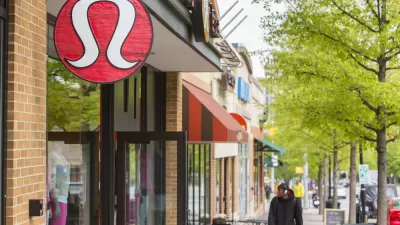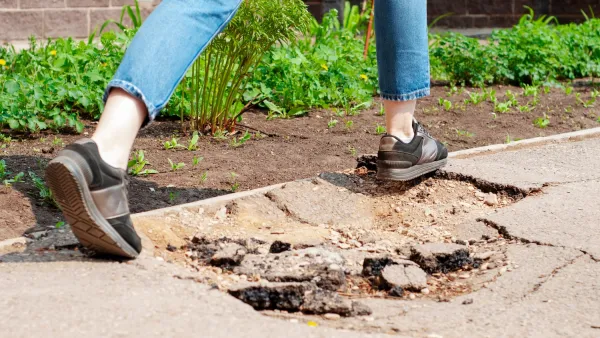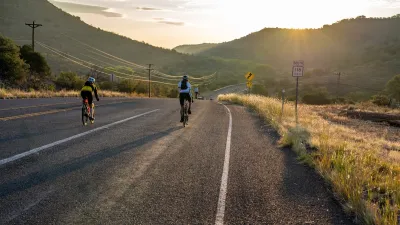Narrow sidewalks and pathways mean that people cannot realistically stay far enough apart.

"The recommendations to keep our space from other people during these crazy times are revealing the shortcomings in our dominant sidewalk and pathway design practices," writes Don Kostelec.
Social distancing is difficult, or even impossible, when minimum and functional widths of sidewalks and pathways are not sufficient to maintain six feet of space between people. "Have you tried that on a four-foot wide sidewalk that lacks a buffer from the street? What about on a sidewalk that has a railing or retaining wall on the back side of it? Have you attempted to keep your six-feet of space while passing someone on an 8-foot wide shared use pathway?" asks Kostelec.
Kostelec presents a series of examples of walkways that clearly privilege automobiles over pedestrians and highlights the issues with navigating these shared spaces during the pandemic.
FULL STORY: Maintainaing Social Distance along Substandard Sidewalks & Pathways

Maui's Vacation Rental Debate Turns Ugly
Verbal attacks, misinformation campaigns and fistfights plague a high-stakes debate to convert thousands of vacation rentals into long-term housing.

Planetizen Federal Action Tracker
A weekly monitor of how Trump’s orders and actions are impacting planners and planning in America.

In Urban Planning, AI Prompting Could be the New Design Thinking
Creativity has long been key to great urban design. What if we see AI as our new creative partner?

King County Supportive Housing Program Offers Hope for Unhoused Residents
The county is taking a ‘Housing First’ approach that prioritizes getting people into housing, then offering wraparound supportive services.

Researchers Use AI to Get Clearer Picture of US Housing
Analysts are using artificial intelligence to supercharge their research by allowing them to comb through data faster. Though these AI tools can be error prone, they save time and housing researchers are optimistic about the future.

Making Shared Micromobility More Inclusive
Cities and shared mobility system operators can do more to include people with disabilities in planning and operations, per a new report.
Urban Design for Planners 1: Software Tools
This six-course series explores essential urban design concepts using open source software and equips planners with the tools they need to participate fully in the urban design process.
Planning for Universal Design
Learn the tools for implementing Universal Design in planning regulations.
planning NEXT
Appalachian Highlands Housing Partners
Mpact (founded as Rail~Volution)
City of Camden Redevelopment Agency
City of Astoria
City of Portland
City of Laramie





























